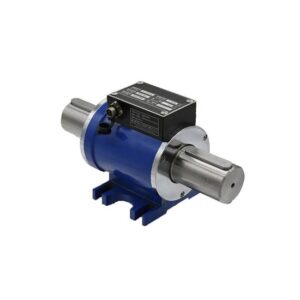Preface
Torque transducer is an integral part of torque testing. It is mainly used to measure various torques, rotational speeds and mechanical power. It converts the changes of torque into electrical signals, and its accuracy is related to the accuracy of the entire detection system. Torque transducer plays a very important role in the detection system after torque measurement. If the sensor does not have high precision, it is difficult to improve the precision of the whole detection system no matter how high the latter precision is. Therefore, with the continuous improvement of the requirements on the accuracy and application scope of the detection system, the torque transducer is also constantly developing.
1 Development and Research of Torque Transducers
The non-contact torque transducer is non-contact, has a long service life, and has no wear. This kind of control compensation improves the accuracy. It can be directly connected with digital instruments and computers through wireless transmission and reception. Non-contact torque transducers mainly include strain-type, magneto-elastic, magneto-electric and photoelectric sensors.

Development and Research of Strain Non-Contact Sensors
The strain non-contact sensor is developed on the basis of the strain contact sensor. It integrates the existing torque measurement technology and methods, and realizes the non-contact torque measurement target through technical improvement and innovation. It uses radio telemetry technology to replace contact a non-contact torque transducer that transmits torque information with conductive slip rings and brush arms. The development and research of strain non-contact sensors are introduced in the following.
2 Torque Transducer Research Focus and Development Direction in the Future
2.1 Torque transducer research focus
At present, there are still some problems in torque transducers, and future research should focus on the following two aspects:
- Solve the problem that the lead wire of the strain gauge in the contact strain torque transducer needs to be led out by the slip ring. After a long time of working, the slip ring is easy to heat up and age, or even break off. Solve the problem that the sensor works in the nonlinear region when measuring small torque. Solve the problems of difficult measurement and excessive deformation when measuring large torque.
- Solve the problem that the accuracy of the non-contact torque transducer needs to be further improved due to the influence of temperature, algorithm and other factors and the difficulty of collecting related signals. Solve the technical problems in static torque measurement.
2.2 Development direction of torque transducer
There are many types of non-contact torque transducers. With the development of new materials and technologies, various types of non-contact torque transducers will continue to appear. The non-contact torque transducer based on the wireless signal transmission module has lower research and development cost and is more favored by the market. With the continuous standardization and normalization of new torque sensors, the measurement accuracy will be
With the continuous improvement, its cost performance and market competitiveness are also constantly improving, and its application is more and more extensive. So the development trend of torque transducer:
- Market-oriented and low-cost development. Various types of torque transducers will continue to develop according to customer requirements for torque transducers. Customers will put forward higher requirements for its accuracy and cost, so manufacturers must consider its marketization and low cost.
- The development of intelligence, digitization and networking. With the development of the Internet of Things technology, the torque transducer will continue to develop with the development of this new technology, moving towards the direction of intelligence, digitization and networking.
- With the continuous development of new material technology and other sensor technologies, torque transducers will inevitably develop in the direction of continuously developed new materials and new technologies.
- Development towards polarization (ie, miniaturization and large-scale development). With the development of MEMS related technologies and the demand for some related small torque measurement, the development of torque transducers to miniaturization has become an important development direction. With the increasing market demand for large torque sensors and the development of related industries, the development of large-scale torque transducers has also become an important development direction. Torque transducers are widely used in tools, motors, wind power and other industries. With the continuous development of market demand, it is the development direction of torque transducers to research new types of torque sensors that meet the needs of the social market.